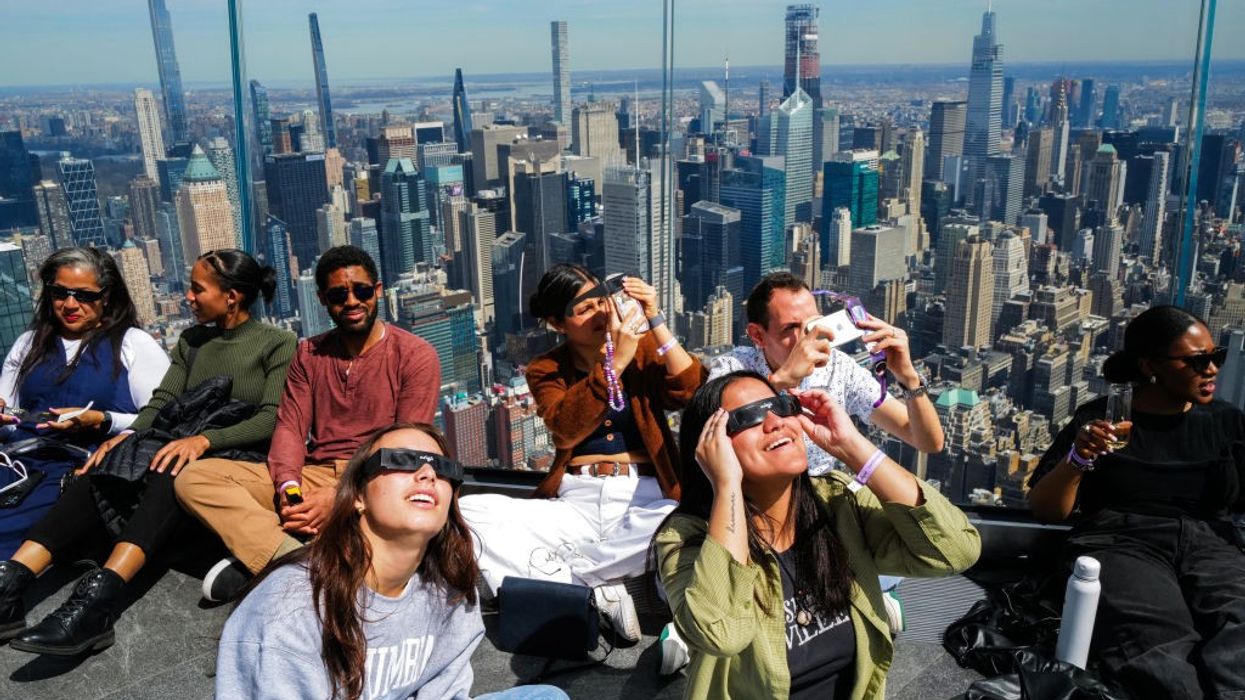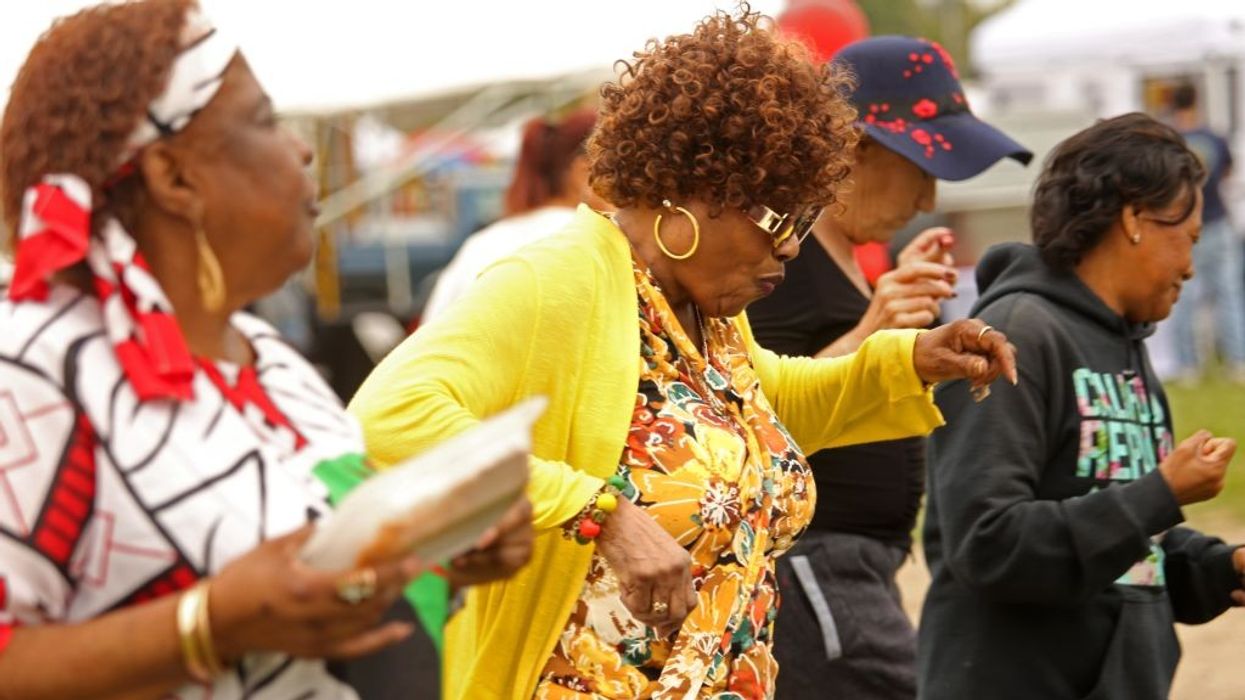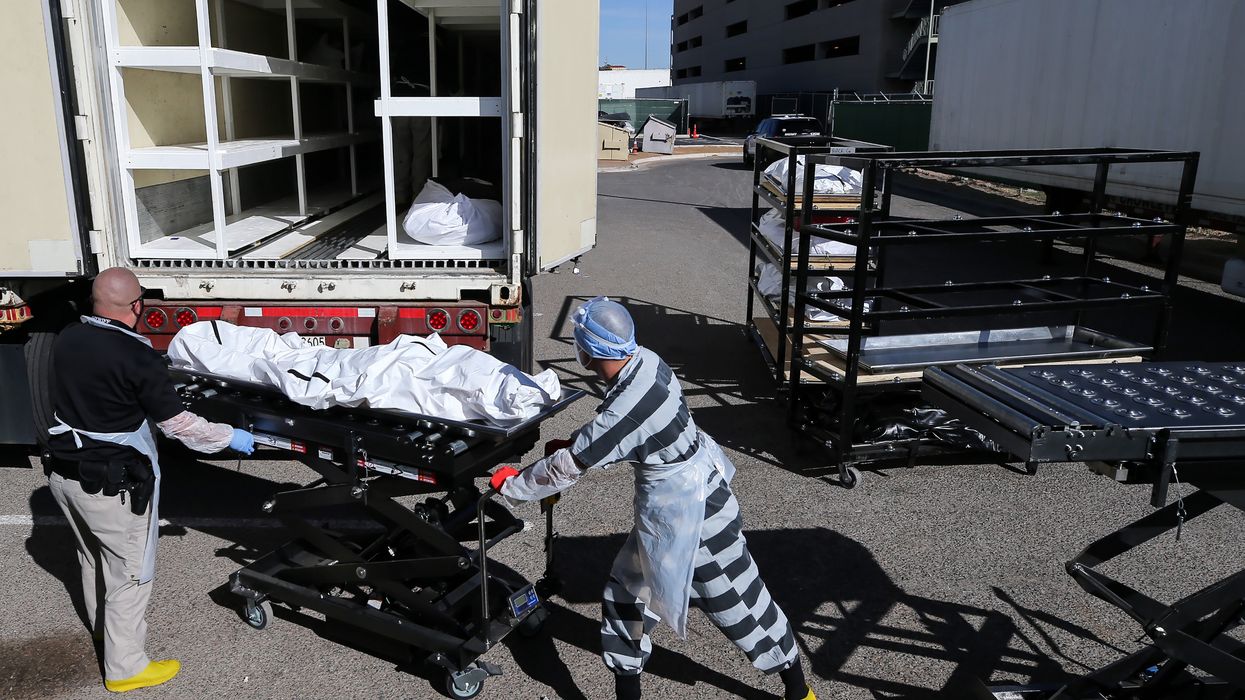Social Justice and Eclipse: Predicting and Preparing For Change
It is best to approach social justice the same way the world prepares for an eclipse—with foresight, community, and coordination.
Millions of people across the United States and parts of Canada and Mexico recently witnessed a total solar eclipse—a rare and breathtaking alignment of the Earth, moon, and sun. Scientists had predicted its precise timing and path years in advance, with detailed maps showing where the event would be most visible.
Across the U.S., communities prepared—gathering in fields, schools, and rooftops with protective glasses and cameras in hand. They trusted science. They trusted preparation. They showed up.
In the same week one year later, over 600,000 people across all 50 states signed up to protest against U.S. President Donald Trump and his ongoing threat to democracy for the Hands Off Protests in 1,300 locations. These protests were not spontaneous—they were planned, anticipated, and powerfully aligned. Total estimates for the day’s peaceful protests are 3 million people.
It is not always possible to predict the exact moment of breakthrough, but one can prepare for the shift through mutual aid, political education, youth leadership, and conflict transformation training.
If it is possible to chart the movement of celestial bodies with such precision, then it is also possible to chart the social conditions that produce change. Responses to the conditions that cause criminality, injustice, or violence can also be charted and faced.
A crime can unfold in seconds, but its consequences—especially in marginalized communities—can last a lifetime. The root conditions that set the stage—poverty, childhood trauma, environmental injustice, disinvestment in education, and systemic racism—are all in place and can be addressed.
Knowing the precursors of injustice, it is prudent not to sit still and wait for tragedy before taking action. It is best to approach social justice the same way the world prepares for an eclipse—with foresight, community, and coordination.
Research from the National Institutes of Health (NIH) confirms that adverse childhood experiences (ACEs)—like neglect, abuse, or household dysfunction—can have long-term impacts on health, behavior, and justice involvement. Communities with higher poverty rates have higher crime rates, not because of moral failure, but due to decades of disinvestment and inequality.
As someone who has spent decades working for criminal and social justice reform in communities and far beyond, I see that systems and practices can indeed seed meaningful social change.
The Theory of Change is a framework that maps how and why desired change is expected to happen in a particular context. It’s not magic. It’s modeling. And when used correctly, it helps communities anticipate outcomes and align resources toward justice.
Like eclipse chasers who travel to be in the “path of totality,” social justice organizers prepare to be where the change is coming. They build coalitions, train communities, and develop infrastructure so that when the time is right, they do not to miss the moment to act.
At this time in history when daily political efforts are aimed at reversing timeworn, proven paths to social justice, such as defunding financial assistance to federal programs, universities, associations, and individuals based on principles of diversity, equity, and inclusion, it is urgent to prepare and put into place ways to counter the effects.
This preparation involves policymakers, funders, nonprofits, communities, advocates, individuals, families, institutions, and faith-based organizations to work toward the goal of social change of equity, fairness, access, and justice.
You cannot stare directly at an eclipse without special tools. Similarly, you often can’t see the slow build of a movement until it’s in full swing. Yet humans can sense change—like animals do before an eclipse, like trees that darken and cool in response to a shadow overhead.
Similarly, social change is intangible yet deeply felt. It is not always possible to predict the exact moment of breakthrough, but one can prepare for the shift through mutual aid, political education, youth leadership, and conflict transformation training.
Preparation now is crucial. Facing funding cuts nationally to vital services, rollbacks of civil rights protections, and an increasing normalization of political violence, it is urgent to create needed structures that assess possibilities in order to anticipate and respond proactively.
Throughout history, research shows that Black women have sensed these shifts and led people and communities through them—not just during well-known moments—but in everyday resistance throughout the 20th and 21st centuries.
For example, Rosa Parks didn’t just refuse to give up her seat one time; she was a seasoned organizer and a supporter of the Student Nonviolent Coordinating Committee, or the SNCC Legacy Project. Shirley Chisholm wasn’t just the first Black woman to run for president—she helped reframe what political leadership looks like.
Barbara Jordan called out President Richard Nixon with such clarity it redefined accountability in American politics. Tennis icon Serena Williams crip-walked across a tennis court and reclaimed joy on a global stage. First Lady Michelle Obama wore sleeveless dresses and shattered expectations of what dignity and leadership looked like in a Black woman’s body.
A 2021 Texas A&M University study reports, “Black women, through their inclusive, community-based activist endeavors, continue to carve out fugitive spaces and counterpublics where counternarratives are actively generated to fight for a more equitable and inclusive democracy that serves all.”
As a Black woman, I see that Black women are the eclipse, the unexpected alignment. They have known through history how to bring light through the dark.
Social change can happen in quiet corners—in small towns, church basements, classrooms, or in the act of mentoring one young person. It doesn’t have to be a massive protest or a U.S. Supreme Court ruling. It can be both.
But when those moments do arrive—like the civil rights movement, the women’s movement, the LGBTQ+ rights movement—they are rarely surprises. They are the result of decades of work, layered with setbacks and strategy.
As Dr. Martin Luther King Jr. once said, “The arc of the moral universe is long, but it bends toward justice.” But that arc doesn’t bend on its own. It requires intention and action.
It is time not just to watch the changes happening, but to prepare and to make change, witnessing the outcomes together.


